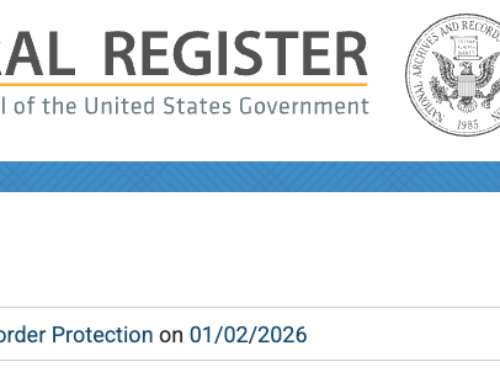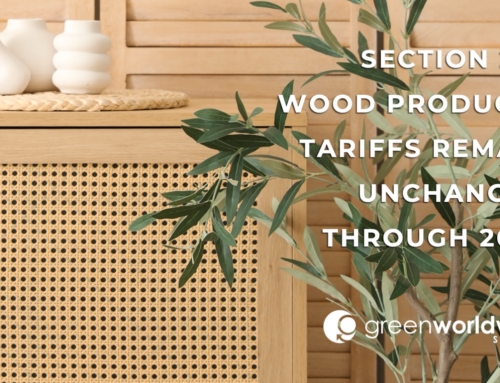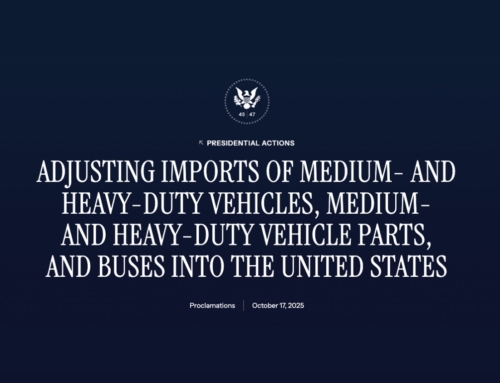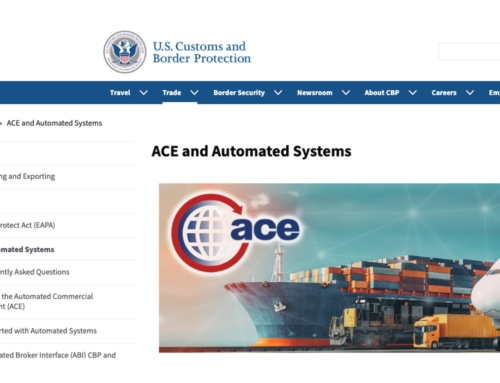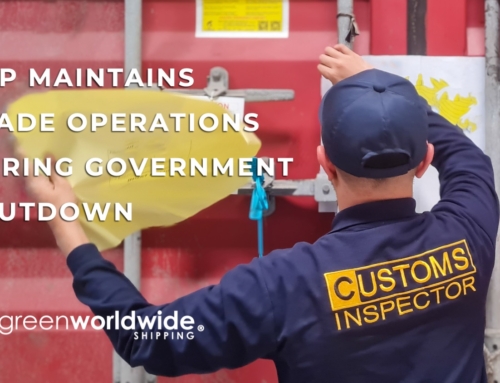International supply chain experts are typically taught that when it comes to ocean freight, full container loads (FCL) are the most cost-effective way to get cargo from one country to the next. But as shippers face increasing trade friction tariffs, equipment allocation, and consumer pressures, moving full container freight has become more and more cumbersome for importers and exporters.
Due to the high cost of airfreight, less-than-containerload (LCL) shipping has increased in popularity with creative importers and exporters over the past decade. Offering a vast array of options, businesses have used ocean consolidation services as a speedy, cost-conscious way to test new markets and keep inventory flowing during peak full container shipping.
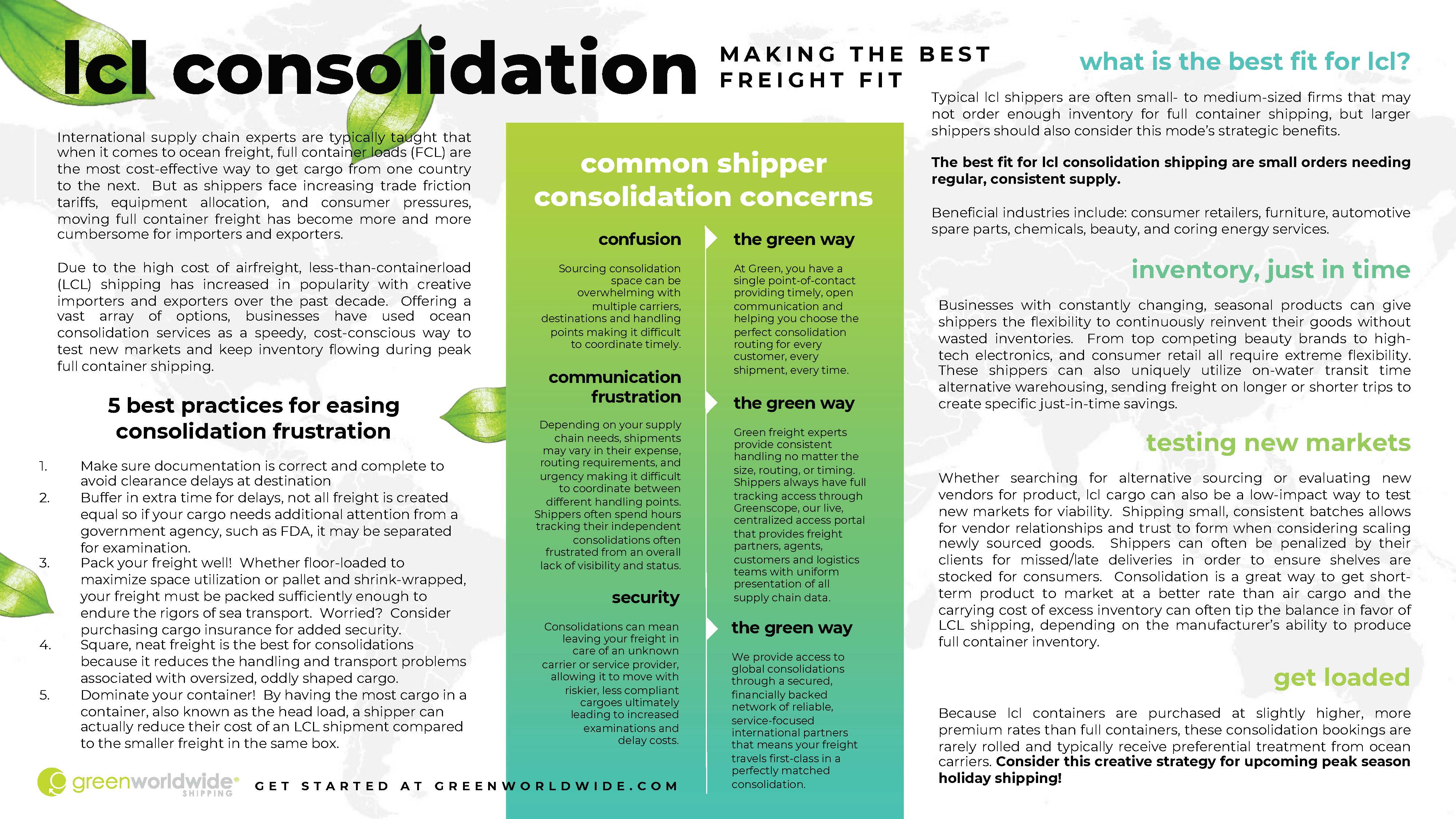 WHAT IS CONSOLIDATION?
WHAT IS CONSOLIDATION?
Consolidation is a method of shipping under which multiple consignments from multiple manufacturers and shippers do not have sufficient volume and must share space in a full cargo container.
WHAT IS THE BEST FIT FOR LCL?
Typical LCL shippers are often small- to medium-sized firms that may not order enough inventory for full container shipping, but larger shippers should also consider this mode’s strategic benefits.
The best fit for LCL consolidation shipping are small orders needing regular, consistent supply.
Industries that typically can benefit include: consumer retailers, furniture, automotive spare parts, chemicals, beauty, and coring energy services.
INVENTORY, JUST IN TIME
Businesses with constantly changing, seasonal products can give shippers the flexibility to continuously reinvent their goods without wasted inventories. From top competing beauty brands to high-tech electronics, and consumer retail all require extreme flexibility. These shippers can also uniquely utilize on-water transit time alternative warehousing, sending freight on longer or shorter trips to create specific just-in-time savings.
TESTING NEW MARKETS
Whether searching for alternative sourcing or evaluating new vendors for product, LCL cargo can also be a low-impact way to test new markets for viability. Shipping small, consistent batches allows for vendor relationships and trust to form when considering scaling newly sourced goods. Shippers can often be penalized by their clients for missed/late deliveries in order to ensure shelves are stocked for consumers. Consolidation is a great way to get short-term product to market at a better rate than air cargo and the carrying cost of excess inventory can often tip the balance in favor of LCL shipping, depending on the manufacturer’s ability to produce full container inventory.
GET LOADED
Because LCL containers are purchased at slightly higher, more premium rates than full containers, these consolidation bookings are rarely rolled and typically receive preferential treatment from ocean carriers
Consider this creative strategy for upcoming peak season holiday shipping!
SHIPPER SHARING CONCERNS?
1. confusion
Sourcing consolidation space can be overwhelming with multiple carriers, destinations and handling points making it difficult to coordinate timely.
the green way
At Green, you have a single point-of-contact providing timely, open communication and helping you choose the perfect consolidation routing for every customer, every shipment, every time.
2. communication frustration
Depending on your supply chain needs, shipments may vary in their expense, routing requirements, and urgency making it difficult to coordinate between different handling points. Shippers often spend hours tracking their independent consolidations often frustrated from an overall lack of visibility and status.
the green way
Green freight experts provide consistent handling no matter the size, routing, or timing. Shippers always have full tracking access through Greenscope, our live, centralized access portal that provides freight partners, agents, customers and logistics teams with uniform presentation of all supply chain data.
3. security
Consolidations can mean leaving your freight in care of an unknown carrier or service provider, allowing it to move with riskier, less compliant cargoes ultimately leading to increased examinations and delay costs.
the green way
We provide access to global consolidations through a secured, financially backed network of reliable, service-focused international partners that means your freight travels first-class in a perfectly matched consolidation.
BEST PRACTICES FOR EASING CONSOLIDATION FRUSTRATION
- Make sure documentation is correct and complete to avoid clearance delays at destination
- Buffer in extra time for delays, not all freight is created equal so if your cargo needs additional attention from a government agency, such as FDA, it may be separated for examination.
- Pack your freight well! Whether floor-loaded to maximize space utilization or pallet and shrink-wrapped, your freight must be packed sufficiently enough to endure the rigors of sea transport. Worried? Consider purchasing cargo insurance for added security.
- Square, neat freight is the best for consolidations because it reduces the handling and transport problems associated with oversized, oddly shaped cargo.
- Dominate your container! By having the most cargo in a container, also known as the head load, a shipper can actually reduce their cost of an LCL shipment compared to the smaller freight in the same box.
Seeing Red? Go Green and ease operational friction with timely communication from friendly freight experts.
As Green continues to monitor the situation, stay up-to-date on freight news by following us on Facebook, Twitter, and LinkedIn or, subscribe to Green’s Freight Talk blog to received updates directly to your email.

